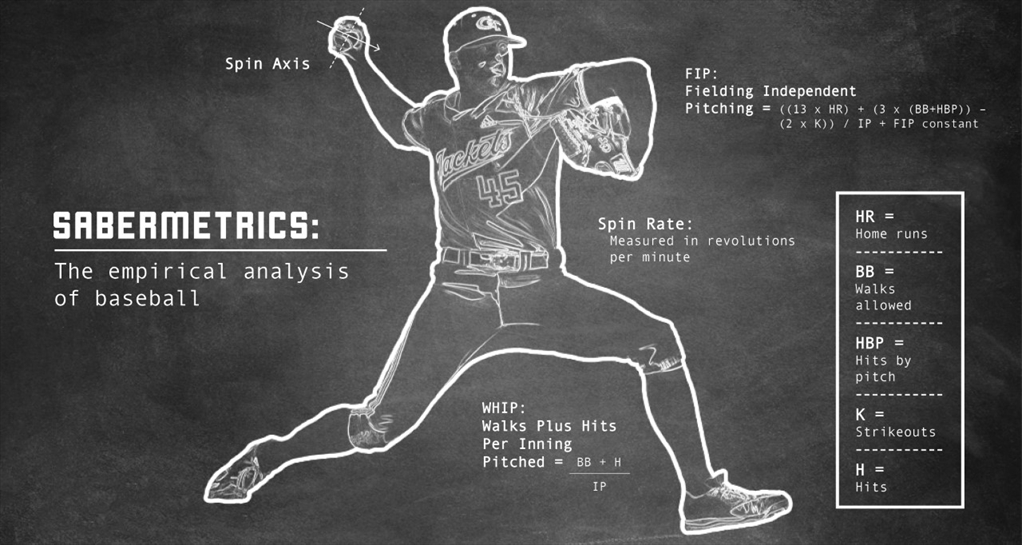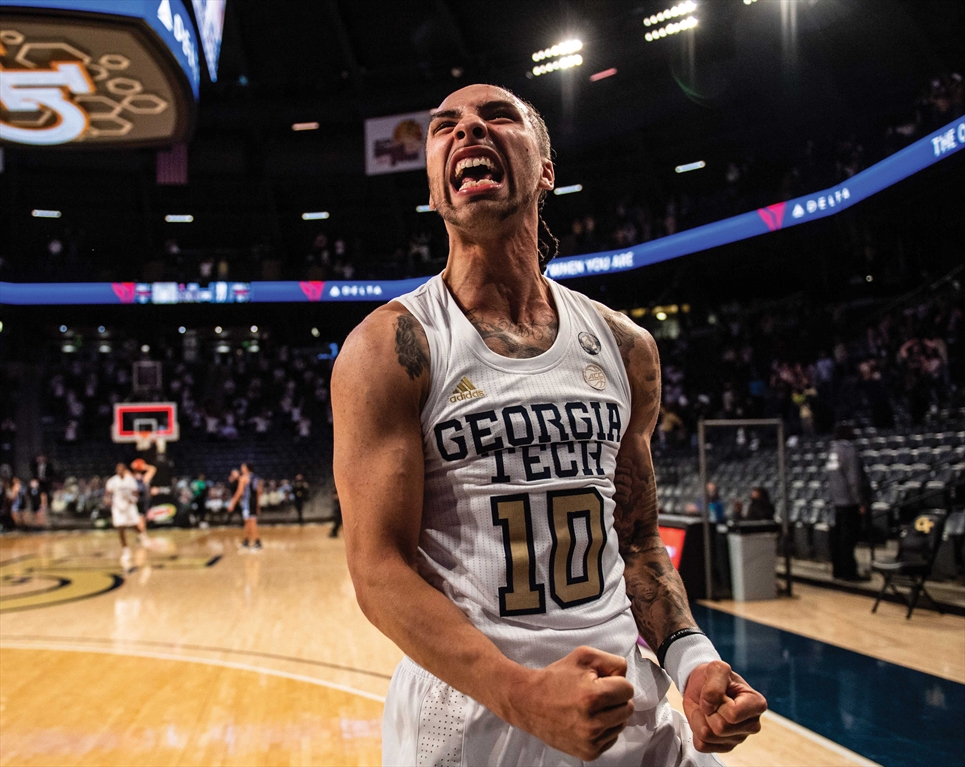Analyze This
By: Tony Rehagen | Categories: Sports

It was no coincidence that Borrell was joining the Yellow Jackets while Georgia Tech Athletics was moving on Phase II of renovations at Russ Chandler Stadium, home of Georgia Tech baseball. The $9-million project replaces the one-story building on the third-base side of the stadium with a new 25,000-square-foot, two-story structure that includes a concourse-level atrium; new premium suite, club, and general seating; new restrooms and concession stands; and, most importantly for Borrell’s intentions, an expanded indoor training facility. “When I left the Yankees, we were building an entire pitching lab,” says Borrell. “Knowing what they were putting in theirs, I wanted to make sure we had the same stuff at Tech. But we went above and beyond.”
The training center will feature 20-foot-wide batting cages, two 10-foot-wide pitching tunnels, and a video analysis room, along with an arsenal of state-of-the-tech analytics equipment. A tunnel with a raised mound containing sensors will detect and measure where pitchers are placing their feet and how much force their bodies are applying to drive their throwing motions. There will also be high-speed motion-capture technology—complete with the “ping-pong-ball” sensors you see behind the scenes of movies and video games— that can digitally map a pitcher’s windup or a batter’s swing. And unlike other training centers, Tech will have the ability to monitor the biomechanics of both pitchers and hitters as they face off live in the tunnel. “That’s not even being done at the major-league level,” says Tech hitting coach James Ramsey. “This is going to be at the top flight of all worldwide baseball player development centers. The technologies we have, a lot of schools recruit off of [having] them. But they don’t program with them—they just gather dust after a couple years. We didn’t want to just have a lab. [These technologies] don’t mean much if you’re not actually producing an innovative product.”

Cracking the Code on Pitching
Analytics has been used in hitting a little longer than in pitching, and Ramsey brought that approach to the Tech batter’s box in 2018. Like Borrell, Ramsey was among the first players to rise up through the ranks just as baseball’s data revolution was starting to spread. In college at Florida State, he used the advanced statistics—like WAR (wins above replacement), OPS (on-base plus slugging percentage), and BABIP (batting average on balls in play)—but it wasn’t until he was drafted by the St. Louis Cardinals and spent 7-plus years in Indians, Dodgers, Mariners, and Twins organizations that he started using devices to measure things like launch angle and exit velocity on balls coming off the bat. He saw how, when armed with this information, players could tweak their approach, improve their performance, and bolster their confidence when the results on the field weren’t exactly matching the data. And it could sometimes be the key to unlocking the latent potential inside a younger player and enabling them to reach the next level.
While analytics was initially used mostly for batters, it was only natural that the hurlers would eventually crack the code to keep up. While he was a pitcher at Wake Forest in the late 1990s and early 2000s, Borrell’s coaches were still using the vague old-school assessments like saying someone’s curve ball “has bite,” or soand-so’s fastball “has life.” By the time Yankees brought him on as a coach in 2015, not only had they adopted advanced stats, like WHIP (walks plus hits per inning pitched) and FIP (fielding independent pitching), but teams were also tracking spin rates and spin axis on pitches. “As a player, I wish that I’d had that,” says Borrell. “As a coach, you either embrace it or you don’t. But I figured if I don’t, I’ll be passed up by someone who does. Besides, I had a thirst for the knowledge. I wanted to be on the forefront.”
Building a Mound of Data
Of course, being out front on any trend presents challenges, and bringing high-level analytics to college baseball is no different. Even at the highest levels of the game, coaches and players worry about getting buried in all the data and losing sight of the fundamental physical and instinctive aspects of the sport. But Borrell isn’t worried about so-called “paralysis by analysis.” He says it’s all part of coaching. “The information is out there,” he says. “My job is to give it to the kid and help him understand how he can use it. Some kids need to stay away from too much data; they have an innate ability to feel their body in space. But 99% of them just drink it in. They can take it and run with it—especially the engineers and other students at Georgia Tech.”
Borrell’s and Ramsey’s forward-thinking use of analytics on each side of the game is balanced by skipper Hall and the trove of traditional baseball knowledge he has accrued over 33 years as a head coach, 27 at the helm here at Tech.
Not only is Tech’s investment in analytics key to the baseball team’s success and the development of its players, but it also gives the Yellow Jackets an advantage in recruiting. Today’s young hitters and pitchers have grown up awash in advanced metrics that go way beyond the old stats on the backs of bubblegum cards. The best of these players know that if they want to progress through the ranks, they’ll have to understand these complex systems and know how to interpret and incorporate complex data into their preparation and performance. And the promise of the Phase II training facility might already be paying dividends even before it officially opens ahead of the 2021 NCAA baseball season: The Yellow Jackets’ last two recruiting classes were each ranked among the Top 10 in the nation.
“For years, we’ve prided ourselves on player development,” says Coach Hall. “The next wave is being able to take each player and train them, coach them, from an analytical, data-driven model. We felt that if we’re going to preach player development, we have to really be on board with all the science and data that is out there.”
And if the athletic department needs more proof that the investment is already causing ripples through the baseball world, they need only ask Borrell.
“I’ve gotten a dozen phone calls from Major League teams saying that when this thing is done, they want to bring their guys down,” says Borrell. “It’ll be a game changer.”


